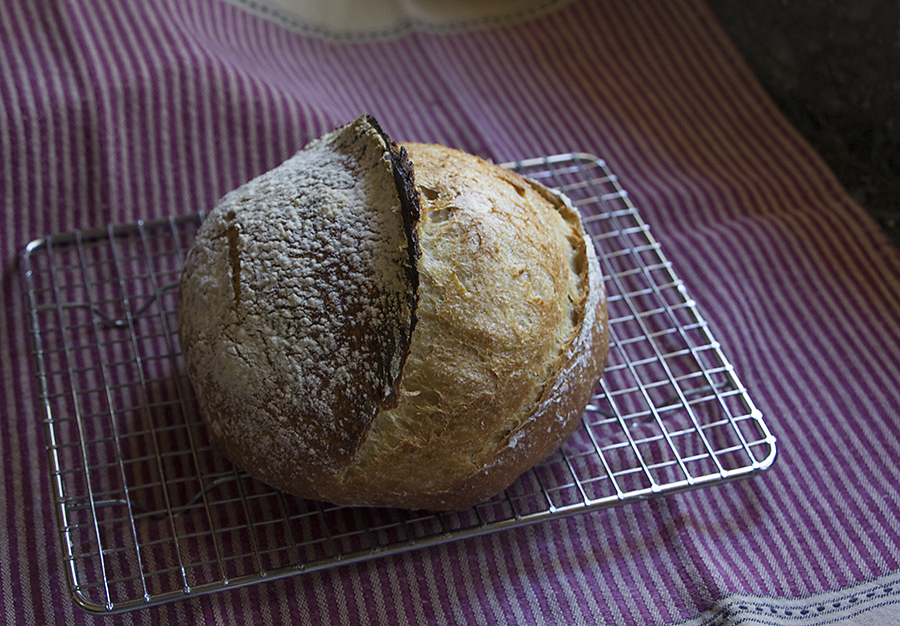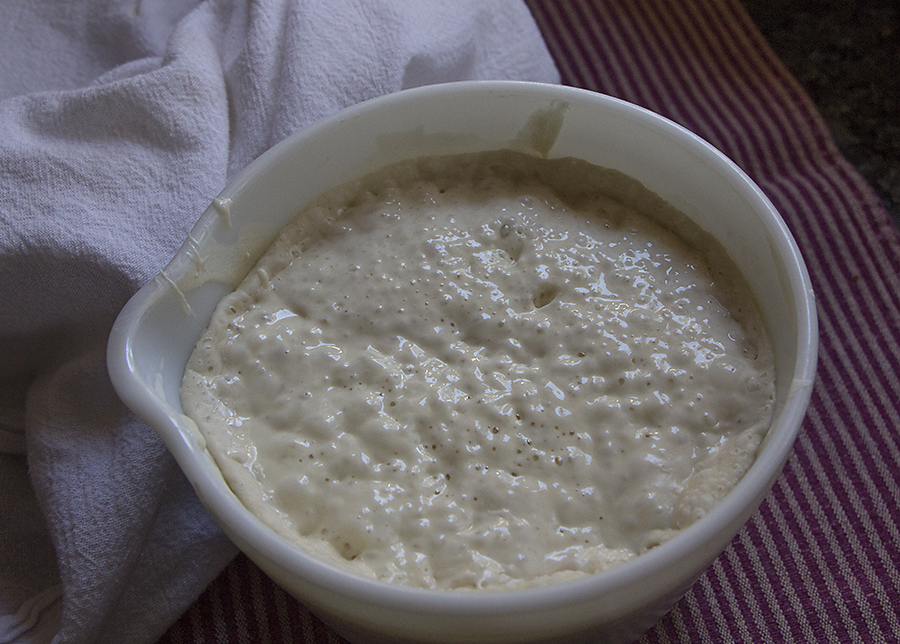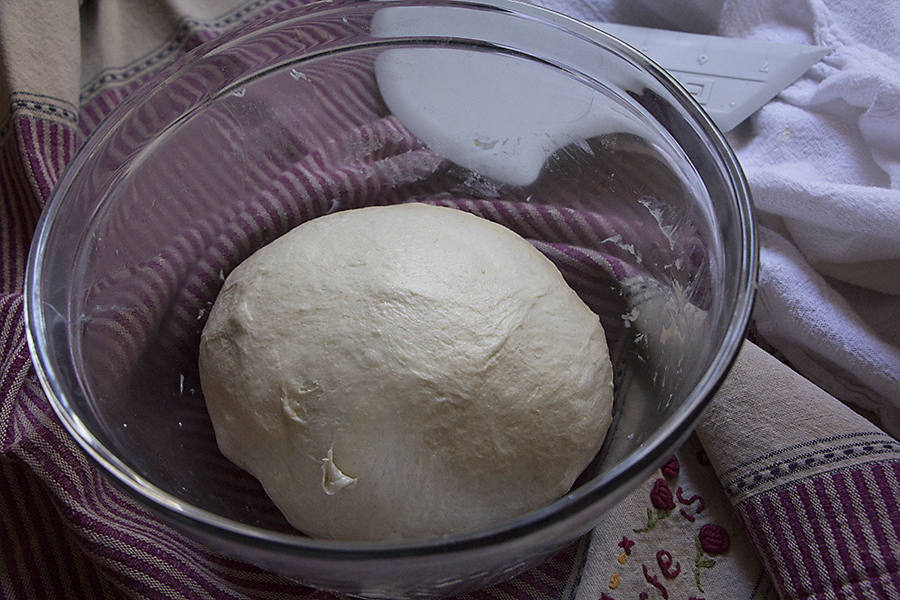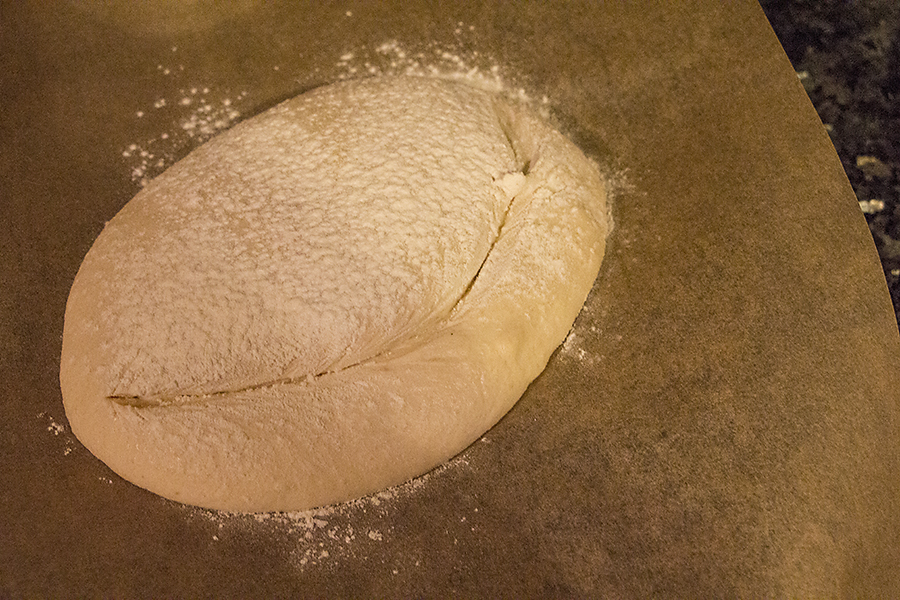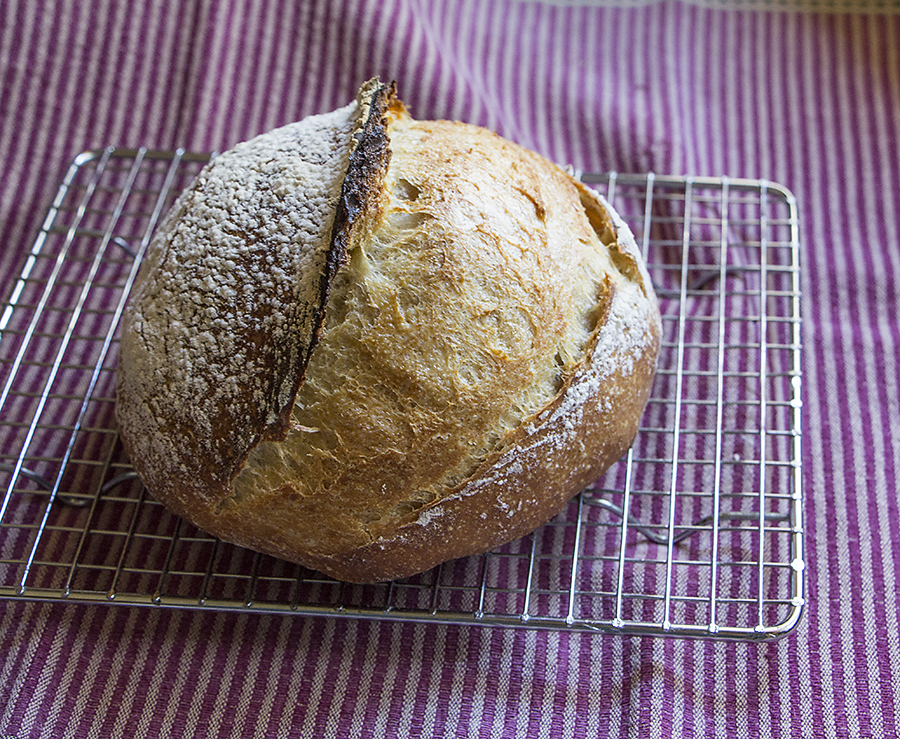Sourdough: a year later
A little over a year ago, I started making sourdough bread (Sourdough v1.0) from a starter made with my own sweet well water and Wheat Montana flour. Sourdough starter is the cultivation of wild yeast … from the air, water and flour … into a form usable for baking.
Before last year, I thought it was too much fuss and I was making delicious artisanal breads via a high moisture and long rise/storage method. But I found that there really was something to the wild yeast and very long rise that added extra flavor to every bread. And I found that it was not a big deal to maintain and use the starter.
The bigger deal than maintaining the starter is the planning ahead part as there is an overnight or 8-12 hour leaven rise, then another 8-12 hour timeframe for developing the dough, letting it rest, pre-shaping, rest, final shaping, rest and finally bake … and THEN, you must let the baked loaf cool for several hours for the best flavor. It is worth it, but I got lazy over the summer and went back to the easier method.
Recently, after starting to make kefir ( Fermenting ) and then reading more about fermented foods, sourdough kept popping up on the fermenting websites. The folks fermenting milk and vegetables were also advocating sourdough for health benefits.
An internet web search on “sourdough health benefits” turns up many articles that explain the health benefits, but in a nutshell, the fermentation process (the starter and long rise) creates a lactobacillus culture or lactic acid. The lactic acid breaks down phytates (indigestible) and works in combination with the wild yeast to pre-digest the starches in the grain. The long soak and rise times break down the gluten into amino acids, making gluten more digestible. Many people who have trouble with commercial bread or bread made with commercial yeast, can tolerate sourdough. Bottomline, just like kefir (fermented milk) and fermented vegetables have bacteria that is good for a healthy gut, the sourdough starter and sourdough process have similar benefits for digestion and absorption of nutrients.
I’d been thinking of restarting the sourdough process primarily because I missed the bread and the sourdough crackers made from discard starter. The health info completed the motivation.
Beautiful!
That’s my bubbly starter about day 7.
The same starter, but stirred up. You can see how much it had bubbled up – good stuff! It has a sour-tangy smell when it is active like this. Not a bad smell – it smells like sourdough!
For this sourdough recipe, 1 Tablespoon of starter is added to 75 grams of flour and 75 grams of water, stirred, covered and left to set at room temperature for 12 hours.
Then more flour, water – a rest, salt dissolved in water and next a period of stretching the dough … once every half hour for 2 1/2 hours.
Above is what the dough looks like after the stretching.
Next is a pre-shape – a rest – final shaping and another rest.
The dough flattens more than rises.
Sprinkle with flour, slash the top and the dough is ready for the oven.
Out of the oven.
Let cool for several hours…
Sourdough bread – yum!
